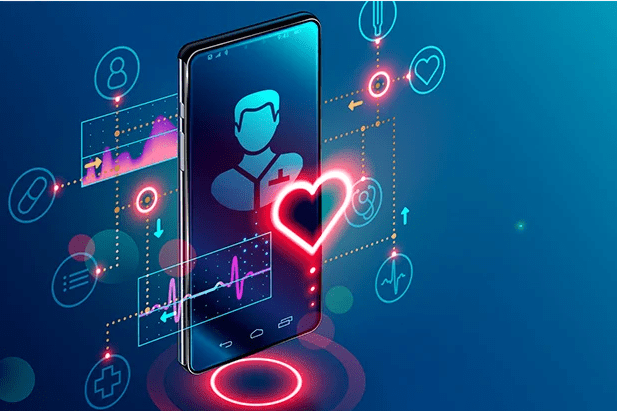When the whole world seems to come to a standstill because of the COVID-19 pandemic, the two sectors that have become extremely critical are agriculture and healthcare.
Agriculture is the backbone of any economy, and it has become all the more important during this crisis to keep the global food supply chain running smoothly to ensure that there is no food crisis.
On the other hand, the healthcare sector is the most stressed out sector right now that is working hard to ensure the health and safety of the population.
While technology has played a critical role in ensuring business continuity across various sectors, let us take a look at how the latest technologies like AI and ML are set to transform these two critical industries.
AI in Agriculture
The food crisis has plagued the world for long. Add on top of that the havoc being unleashed on agriculture due to climate change, and we have a ripe case for AI and ML application to solve the food crisis. This is being touted as the next major agricultural revolution. By leveraging such next-generation technologies and by working smarter, a lot of ground can be covered.
It is estimated that the AI in the agriculture market will grow to USD 4.0 billion by 2026.
So, what are the various use cases of AI in agriculture? Let’s take a look
Yield Optimisation: Yield optimisation is beyond just historical data analysis. There are components such as data about weather predictions, soil data, and even the economic conditions of the regions which come into play. Using AL/ ML models to analyse these parameters, farmers can not only predict the yield but also know how to optimise the same.
Livestock Management: Cattle and livestock are important assets for farmers. They not only help in the farming process but also provide other sources of income in the form of meat as well as dairy. Their health is of utmost importance, and the whole herd can be affected adversely by diseases of foot and mouth. Farmers now deploy infrared sensors and other smart monitors to detect anomalies in the herd movement or temperature reading to identify and cure the particular animal and prevent the disease from becoming a catastrophe.
Weed Detection: The same principle can be extended to crop disease and weed detection. Farmers can use smart devices, robotics, and machine learning to constantly monitor and identify the changes in the vitals of the crop and see if unwanted weeds are growing on the soil. AI bots can help farmers cull out the weed at the nascent stages and harvest a higher volume crop at a faster pace.
Soil and Water Management: AI-powered smart metering can help farmers in the economical usage of water resources and help them in cost-saving. Similarly, these technologies can help them with the optimal utilisation of soil. Over usage of the soil can lead to depletion of its natural resources and optimal usage can ensure that the soil retains its vitality. By adopting AI and ML, farmers can know when the soil might need replenishment and how the intervals need to be spaced out considering the weather, yield, and soil time. This can help them make more accurate decisions regarding sowing, seed selection, and fertiliser usage to get a higher yield per hectare.
AI in Healthcare
AI has come a long way in healthcare and has already delivered a high impact on this industry. It has played a pivotal role in giving rise to a patient-centric model.
Here are some of the many ways AI and ML are transforming the healthcare industry –
Drug Discovery: On average, $2.7 billion are spent by the pharmaceutical companies for every drug. Pharma companies have started leveraging AI in drug design to better predict molecular dynamics. It is helping them improve development efficiency and reduce drug development costs.
Improve Operational Efficiencies: Hospitals need to optimally manage various parameters such as temperature, humidity, and air regulation to run the facilities smoothly. AI is allowing hospitals to smoothly carry out facility management while ensuring the physical safety of the patients and staff members. These technologies are also enabling predictive maintenance of hospital assets and the tracking of healthcare devices to ensure proper allocation and deliver better care outcomes.
Pandemic Management: Countries like Taiwan, Japan, and Singapore leveraged the power of AI and ML to curtail the spread of coronavirus. Borrowing from the principles of how communicable diseases spread, AI/ ML helped in predicting the spread of the coronavirus and allowed the government agencies to put in place the required logistics, ensure border controls, and protect their most vulnerable staff members.
Remote Health Monitoring: Remote health monitoring and telemedicine have shifted care from a hospital to a more personal environment, such as the patient’s home. It is helping patients in saving their care costs and also helping in reducing the workload on hospitals. With wearable devices monitoring the basic vitals of a patient and periodically streaming those to the caregivers, the quality of care has improved.
Precision Surgeries: AI robots are not new anymore. Those are being increasingly adopted in hospitals for carrying out precision surgeries. These medical robots are also being used in rehabilitation facilities.
Today, a large volume of data is being generated from various sources. The future will be driven by technologies like AI and ML and their ability to crunch this data to deliver actionable insights. These insights will have a significant impact on the lives of people!




